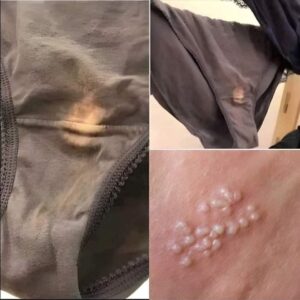Warning Signs? These Mysterious Skin Dots Could Point to Something Serious — Find Out More

What Your Skin Might Be Trying to Tell You — Don’t Miss the Signs
Your skin isn’t just your body’s largest organ — it’s also one of its most powerful messengers. Acting as your first shield against infections, UV rays, and environmental damage, your skin can also reveal hidden clues about your internal health.
If you’ve noticed unusual dots, spots, or discoloration appearing, don’t dismiss them. While many skin changes are harmless, others could signal deeper health issues — including early signs of skin cancer. Paying attention to these subtle warnings could make all the difference.
Your Skin Could Be Sending You a Warning—Here’s What to Look Out For
Your skin isn’t just your body’s outer layer—it’s a powerful messenger. It protects you from UV rays, bacteria, and toxins, but it also reveals what might be going wrong inside your body. One of the most subtle yet serious signs to watch for? Unusual dots, spots, or discolorations that appear without explanation.
While many skin changes are harmless, others may be early signs of skin cancer—including melanoma, the most dangerous form. Being proactive about skin health could save your life.
🔍 Why Monitoring Your Skin Matters
Skin cancer is far easier to treat when caught early. But the problem? Many people overlook small changes, assuming they’re just moles, sunspots, or rashes. Unfortunately, what seems minor might be something more serious. Among the most concerning changes: new or evolving dots on your skin.
⚠️ What Kind of Skin Dots Should Raise Red Flags?
Not every spot is dangerous, but the following types should be evaluated by a medical professional:
1. Dark, Asymmetrical Dots with Uneven Borders
These may signal melanoma, which can grow quickly and spread if left untreated. Look for spots that combine multiple colors (brown, black, red, even blue) and change shape or size over time.
2. Persistent Pink or Red Bumps
These may be signs of basal cell carcinoma (BCC) or squamous cell carcinoma (SCC). These forms of skin cancer are less aggressive than melanoma but still require medical treatment. Watch for scaly patches, shiny bumps, or sores that don’t heal.
3. Clusters of Tiny Red or Purple Dots
These can indicate issues with blood vessels or, in rare cases, serious conditions like leukemia or Kaposi’s sarcoma. If accompanied by bruising, fatigue, or other symptoms, see a doctor immediately.
4. Dark Streaks Under the Nails
A brown or black mark under a nail that doesn’t grow out with the nail might be a sign of subungual melanoma. It’s often mistaken for a bruise, but if it doesn’t fade, have it checked right away.
✅ Use the ABCDE Rule to Spot Trouble
The ABCDE method is a simple way to identify suspicious skin spots:
- A – Asymmetry: One half looks different from the other.
- B – Border: Edges are irregular, blurry, or ragged.
- C – Color: Multiple colors or unusual hues.
- D – Diameter: Larger than 6mm (about the size of a pencil eraser).
- E – Evolution: Any change in size, shape, or color.
If a mole or spot ticks any of these boxes—get it checked.
🧬 Who’s at Risk for Skin Cancer?
While anyone can develop skin cancer, certain people face higher risks:
- Frequent sun exposure or tanning bed use
- Fair skin, light eyes, or red/blonde hair
- Family history of melanoma or skin cancers
- Weakened immune system from illness or treatment
- Past severe sunburns, especially during childhood
🩺 What to Do if You Spot Something Suspicious
If you notice a questionable mark, here’s what to do:
- Book an appointment with a dermatologist immediately.
- Avoid self-diagnosing. Only a professional can determine what’s benign or dangerous.
- Use sunscreen daily (SPF 30 or higher) and avoid peak sun hours.
- Check your skin monthly, including hard-to-see areas like your back, scalp, and behind your ears.
🛡️ Final Thoughts: Your Skin Could Save Your Life
Don’t ignore what your skin is telling you. A small dot today could become a major health issue tomorrow if overlooked. Early detection is your best defense against skin cancer and other serious conditions. When in doubt, always seek professional guidance—because your health is too important to guess.





